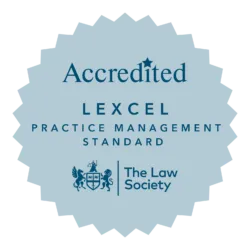
School asbestos group calls for US-style approach
One of the country’s best-known education asbestos advocacy groups is using national Mesothelioma Day (Friday, July 1) to urge the Government to introduce US-style legislation requiring local authorities to give parents a detailed annual report on the asbestos risks of the school their children attend.
“If we are ever to solve this problem that still contaminates so much of our school infrastructure, a policy of complete openness is essential and must be introduced now and without delay,” said Julie Winn, a spokeswoman for Asbestos in Schools (AiS) and partner at Morrish Solicitors in Leeds.
Figures released by AiS show that mesothelioma – the lung cavity cancer solely caused by exposure to asbestos fibres and dust – has caused the death of an average of 16 UK teachers each year over the last decade, up from only three a year in the 1980s. In addition school caretakers, cleaners, cooks, teaching assistants and secretaries have died of the cancer.
The Government’s own estimate is that approximately seventy-five percent (75%) of school buildings have Asbestos-Containing Materials (ACMs) but recent Health and Safety Executive policy has confirmed that schools will no longer be inspected proactively even though the HSE’s own findings were that a significant proportion of local authorities had serious flaws in the asbestos management systems that they have a statutory duty to maintain.
Winn says the unique nature of the teacher-pupil workplace means the issue demands urgent Government intervention.
“In the past thirty years almost 230 teachers have died of mesothelioma but more than sixty percent (60%) of those deaths have occurred in just the last decade,” said Winn, who also chairs the Joint Union Asbestos Committee. “The trend here is accelerating but what is even more alarming is the knowledge that each teacher affected has been working in a class-room environment with on average 20 to 30 children.”
“I was diagnosed with mesothelioma after a 35 year career in teaching. Needless to say, I had not imagined teaching to have such deadly potential. It is shameful that some schools are failing to protect children and staff in them. We must maintain proper controls,” says Carole Hagedorn, 60, of Chelmsford speaking about the issue.
More than 14,000 primary and secondary schools were built in the thirty-year period after 1945 when the use of asbestos was at its peak and ACMs are still commonly found in school partition walls, window surrounds, lagging and ceiling panels. ACMs can be released into the air if the structures are not well maintained or, in some schools, from hitting walls or slamming doors. A recent incident occurred at a Hungerford primary school in March 2011 when a hydrogen balloon exploded during a chemistry demonstration, shaking asbestos dust from ceiling panels onto seventy (70) pupils.
“The government’s concern about adopting a more open policy on asbestos in schools appears to be that if the public understand the nature of the problem they’re only going to panic. And in their panic, they’re going to want all asbestos removed from each and every school, which the government appears to believe is too high a price,” says Winn. “This concern is exaggerated: the panic has not happened in the United States. We are campaigning for effective asbestos management and progressive, not immediate, removal.”
By contrast, because of the particular vulnerability of children to ACM exposure in schools, in 1986 the United States Congress passed the Asbestos Hazard Emergency Response Act or AHERA. Not only does AHERA require all schools to audit their ACMs and develop appropriate management plans but each school authority must regularly communicate that plan to every parent and teacher, with updated surveillance of ACMs taking place every six months.
According to Winn, who is also a governor at her local school, the response to AHERA has helped to transform the issue of asbestos in schools: “The policy of openness in the USA does not create panic but it does mean that staff and parents are aware of the dangers of asbestos and the best measures to be implemented to ensure the safety of those who work or study in schools.”
In a statement in April of this year Asbestos in Schools Chairman, Annette Brooke MP, said the government training budget for asbestos awareness training was “grossly underfunded at less than a pound each for each of the 27,000 schools.”
Winn points out that this budget is for one year only. “The Department of Education has not assigned any budget in subsequent years to maintain this programme of asbestos awareness training,” says Winn.
Ends.
For further information, please contact Vanessa Charters on 07595-564764.
Notes:
1. In a statement in April 2011 Asbestos in Schools Chairman, Annette Brooke MP, said:
“Despite the dilapidated state of the school stock and an estimated £8.5bn backlog of repairs, the Government has recently confirmed that its policy for schools is to leave the asbestos in place and manage it for the remaining life of the buildings. More than forty years ago the Department for Education were warned of the particular vulnerability of children to the dangers of asbestos and told to put measures in place to prevent their exposure at school. But it is only now that, under considerable pressure, they are finally taking action and introducing asbestos awareness training. However the training is not mandatory and is grossly under-funded at less than a pound for each of the 27,000 schools. If the Government are to tackle the appalling legacy of asbestos in schools then they must assess the scale of the problem and the risks, adopt a policy of openness and allocate proper resources so that staff and pupils really are made safe from the dangers of asbestos.”
2. Asbestos in Schools website is found at http://www.asbestosexposureschools.co.uk/
3. Joint Union Asbestos Campaign comprises the six main education unions: Association of School and College Leaders; Association of Teachers and Lecturers; National Association of Head Teachers; NASUWT; National Union of Teachers; Voice; plus the education sections of Unite, UNISON, UCATT and the GMB.
4. Hungerford school asbestos scare: “Clean-up at Berkshire school over science blast asbestos scare” http://www.bbc.co.uk/news/uk-england-berkshire-12932139










